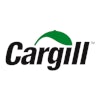Energy efficiency is a topic of growing interest across the industrial processing industry, including feed and grain. Many equipment suppliers now offer high-efficiency lines to meet the rising demand, but there are ways to decrease energy consumption without purchasing new equipment.
Retrofitting existing motor-driven machinery with NEMA Premium Efficient, or EISA-compliant, motors can decrease utility bills and greenhouse gas emissions. In some cases, simply retrofitting a smaller sized motor can be profitable. Some utility companies even offer incentives to customers who install new motors and gear drives.
But there are costs associated with motor retrofitting, and a huge return on investment isn’t always guaranteed. The application and other individual circumstances play a role in determining which motors should be retrofitted to attain maximum ROI.
Feed & Grain gathered eight critical pieces of information from motor and drive manufacturers, equipment suppliers, millwrights and engineers that will help plot a course for retrofitting motors throughout a facility.
1. Premium Efficient motors are mandated
The government has been mandating minimum efficiency levels for motors manufactured in the United States since 1997 — originally under the Energy Policy Act (EPAct), and now under the Energy Independence and Security Act (EISA). After EPAct was implemented, motor manufacturers began improving their efficiencies beyond the minimum requirements, so the National Electrical Manufacturers Association (NEMA) developed its own standard to identify motors that exceeding the mandated levels.
Recognizing the industry’s ability to meet an elevated set of standards, the EISA mandated that all motors manufactured after Dec. 19, 2010 must meet NEMA Premium Efficient™ standards.
The regulation has no impact on motors currently in use, but it means the same motor that was installed before 2010 might consume less electricity if it were purchased today. The amount varies by horsepower and other factors.
For example, the required efficiency for a 5-HP motor before EPAct went into effect was 86%, then EPAct raised it to 87.5%, and now EISA requires 90.2% efficiency. On a 100-HP motor, it raised from 93% to 93.6% to 95% efficiency.
A complete list of NEMA Premium Efficient standards is available at www.nema.org.
2. Check efficiency of current motors
When deciding whether to retrofit equipment with Premium Efficient motors, it’s essential to verify the efficiency of the current motor to accurately gauge the savings potential.
“It’s impossible to say in every instance there are huge gains to be made,” says Joe Kiolbasa, product manager for Donaldson-Torit of Minneapolis, MN. “The two main factors are: The efficiency of the existing motor, and how it compares to the efficiencies on the market now.”
Jaron Vande Hoef, senior project engineer for Sioux Center, IA-based Interstates Engineering, Inc., recommends starting with the Department of Energy’s Industrial Technologies Program (ITP) for guidance. The ITP’s MotorMaster+ is an online motor selection and management tool that supports motor systems planning by identifying the most efficient action for a given repair or motor purchase decision.
“Any maintenance manager or personnel responsible for an industrial processing facility should download the ITP’s free tool MotorMaster+,” says Vande Hoef. “You simply plug in the catalog number of the motor, and it will tell you the more efficient alternative.”
The catalog includes more than 20,000 motors’ specs, and features motor inventory management tools, maintenance log tracking, efficiency analysis, savings evaluation, energy accounting and environmental reporting capabilities.
Kiolbasa mentions that most motor manufacturers’ websites also provide similar information.
“Or the operations manager at a facility can call their motor sales representative and have him work through the numbers to determine what the most efficient option is,” he adds.
3. Consider downsizing
Sometimes the most efficient option simply requires downsizing. Oversized motor run below their nameplate efficiency and lead to high, needless consumption of electricity.
“A lot of motors were sized when the facility was initially designed, and they’re too large,” says Glenn Andler, general manager of VitaBuilders, a professional millwright and agricultural operations services provider in Fall River, WI.
Andler explains that in the past, larger-than-necessary motors were commonly used to compensate for low efficiency levels.
“Before motor efficiency was mandated, they could be as low as 70% to 85%,” says Andler. “Many people installed large motors to get more power because electricity was inexpensive and people weren’t as concerned about energy conservation. But today, motor and drive efficiencies are much tighter, so you should always appropriately match the motor size to the equipment and application.”
Vande Hoef suggests contacting your utility company to conduct an energy audit and track how much energy a motor actually consumes. If it uses less than it was designed to, replacing it with a smaller, more efficient motor will typically produce a quick payback.
The MotorMaster+ tool can also help size a motor for a particular piece of equipment or application. Even so, Doug Post, president of Intersystems Engineering, Inc., recommends contacting an engineer before any motor retrofitting project.
“Programs such as MotorMaster+ are helpful, but to a layman, it still might be difficult to correctly size a motor,” says Post. “I’d advise working with an experienced engineering or process firm because they might know for example that a 25-HP motor can efficiently handle a given application, even if a 40-HP was recommended elsewhere. The resulting savings over the long haul would easily pay for the consulting fee.”
4. Choose the right drive
In addition to helping right-size a motor, a process engineer may recommend a specific drive for an application. One option is a Variable Frequency Drive (VFD), which controls the speed of an electric motor by adjusting the frequency of the electrical power it supplies.
“Installing a VFD saves energy in applications where the motor should run at varied speeds at different times, or not at all,” says Vande Hoef. “For example, in a pipeline without a VFD, the motor runs at the same speed and consumes essentially the same amount of energy whether it is 30% or 100% full of fluid. Installing a VFD allows you to slow the motor to 30% speed, and saves money by consuming less energy.”
Installing a VFD also gives operators the option to put equipment in idle mode.
“With a grain elevator, one of the core functions is receiving, but all of the equipment from the dump pits to the conveyors to the bucket elevators, only needs to run while it’s receiving grain,” Vande Hoef points out. “Yet in most cases that equipment stays on continuously. With a VFD you can put the equipment into idle until a truck drives up to dump. Then it can be turned on with a button or automated with motion sensors. After the grain is conveyed and distributed to its destination, the equipment would drop back into idle and conserve energy.”
However, some grain operations do require constantly running motors for certain applications. Drive manufacturer Rexnord Industries, LLC, Milwaukee, WI, has developed a high-efficiency gear drive suitable for many applications in the feed and grain industry.
“The Falk V-Class gear drive incorporates unique cooling devices that are simple, maintenance friendly and almost breakthrough in the ability to dissipate heat,” says Craig Franz, product review specialist, Rexnord Industries, LLC.
Jason Quackenbush, marketing manager, engineered drives for Rexnord Industries, explains the technology behind the Falk V-Class’ duraplate system.
“It’s a self-contained unit that uses a shaft driven pump and cooling plate that the oil circulates through to cool down,” Quackenbush says. “Most other small, power dense products on the market require electric fans, cooling tubes or air to cool the oil, which need some external source of energy. Our duraplate is a green technology because it doesn’t require any additional power source.”
But Franz warns that even with a highly efficient gear drive, it’s important to properly install it to avoid energy loss.
“You can end up with twisted housings or misaligned couplings, which rob energy from the application and turn it into heat,” Franz says. “Ultimately, the inefficiency resulting from improper installation or maintenance will result in a shorter life of the gear drive and the entire system itself.”
If a motor is already properly sized and running with the right gear drive for the application, the decision to retrofit with a new NEMA Premium Efficient motor may be the best option to increase efficiency.
5. Devise a retrofit strategy
Donaldson-Torit’s Kiolbasa recommends targeting your retrofitting budget based on the motor’s age and runtime hours. He says any equipment installed before 1997 is a red flag that the motor’s efficiency is lower than what’s currently available, but if it was manufactured after 1997, it’s likely comparable to the current EISA mandate and the ROI shrinks.
Equipment that runs nearly 24 hours/day or more than 2,000 hours/year is another indicator that retrofitting may be economically viable.
Scott Hudson, account manager for Siemens, based in Munich, Germany, suggests incorporating a replace and repair strategy based on horsepower.
“Companies may find that implementing an internal energy efficiency policy helps them standardize their decision making process,” says Hudson. “For example, they might apply a policy stating that every motor over 25-HP that needs repairing will be replaced with a Premium Efficient one.”
Intersystems’ Post recommends a similar strategy.
“Generally, my rule of thumb is if you have to replace a motor due to failure, installing the Premium Efficient one is a wise move because it pays off over the life of the motor,” says Post. “But it’s hard to justify the payback of taking a totally operational motor and replacing it with a more efficient one. If the opportunity presents itself, go with the Premium Efficient, but don’t make it a company initiative to replace all of your motors. It will take much longer to see an ROI with that approach.”
The highest returns generally come from retrofitting motors that are 100-HP and above in applications that are constantly running, such as fans, mills and conveyors, explains Kiolbasa.
“For example, according to NEMA standards, a 5-HP motor before 1997 had an efficiency of 86%, while the Premium Efficient level is 90.2% efficiency,” he says. “If that motor runs 16 hours/day for five days/week, 52 weeks/year, the Premium Efficient motor will save 4,160 kilowatt hours/year, or $89.89 annually — assuming the cost per kilowatt hour is 10.7 cents. The ROI in this case may take a number of years. However, applying the same circumstances to a 100-HP motor, where the pre-EPAct efficiency was 93% and the Premium Efficient level is 95%, you’d save roughly $750 in only a year.”
6. Examine total cost of ownership
The initial purchase price of an EISA-compliant motor compared to an EPAct compliant motor ranges from an additional 10% to 30%, according to Kiolbasa.
However, lifetime cost analyses conducted by Siemens show that the initial purchase price represents only 3% to 4% of the total cost of ownership. A majority of the remaining cost is the energy it consumes, justifying the higher purchase price.
Brett Renken, account manager for Siemens, says many in the grain industry are beginning to see the value in purchasing Premium Efficient motors.
“In the oil and grain handling side, the decision has increasingly skewed toward retrofitting new EISA-compliant motors as opposed to repairing or rewinding old motors,” says Renken. “In the past, they leaned more toward the rewind option because of the lower capital costs, but today more companies are looking at cutting operational costs long-term.”
Again, visiting MotorMaster+ or contacting your motor sales representative will help determine the lifetime cost of ownership of a particular motor model number.
7. Look for rebates
In addition to high return on investment, and low total cost of ownership, utility company rebates can serve as an incentive to consider retrofitting equipment with high-efficiency motors.
Before the implementation of EISA, the federal government had incentive programs for industrial facilities that undertook energy saving projects, but for the most part, those rebates have dried up. Fortunately, there are still many electrical utility companies that offer similar programs without federal funding.
Since these programs aren’t standardized nationwide, it is difficult to predict how much a facility can recover from a motor retrofit project. Vande Hoef recommends contacting your electric company to determine how many incentive dollars are available.
“Most utilities, including small municipal-owned ones, will offer an incentive to help you purchase energy-saving motors, VFDs, lighting fixtures and HVAC or compressor controls,” says Vande Hoef. “Those programs are as wide and varied as the number of utility companies themselves, so it’s a matter of sitting down with your customer service representative and seeing what they can offer you.”
8. Consult your utility company
In addition to rebates, many utility companies offer free energy audits to their customers, so they can recommend other energy saving projects. They also will inform you about any policies they have regarding limits on initial startup loads.
Some companies may require their customers to use Premium Efficient motors or energy saving gear drives in order to minimize or regulate power draw on their supply.
VitaBuilders’ Andler notes, “A particular utility company in Michigan requires all newly installed tower dryers to have a variable speed startup, while companies in surrounding states have a different policy. In Wisconsin, Minnesota and Iowa, many electric companies require a soft start, which powers up slowly, then ramps up, but do not mandate using a VFD. So before installing something with a large power draw, check your local supplier’s policies.”


















